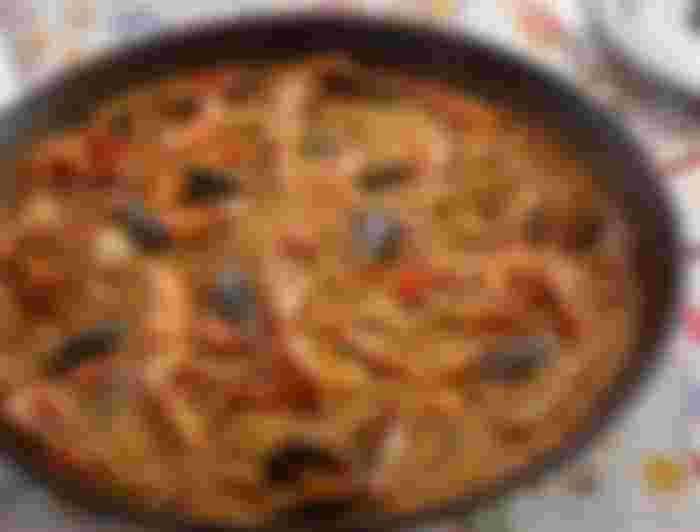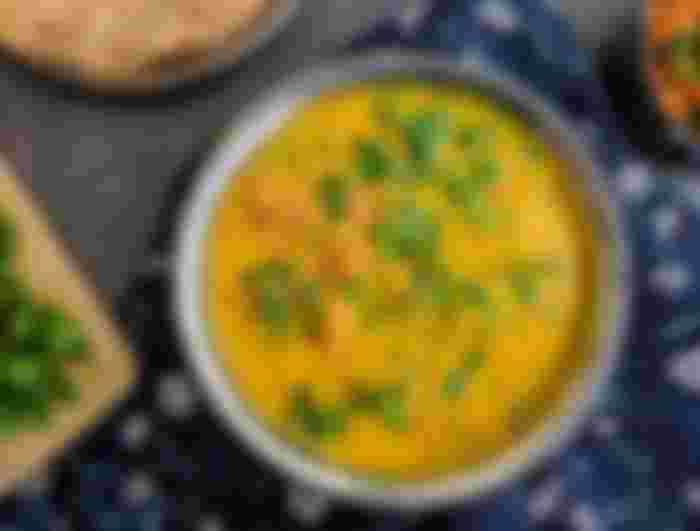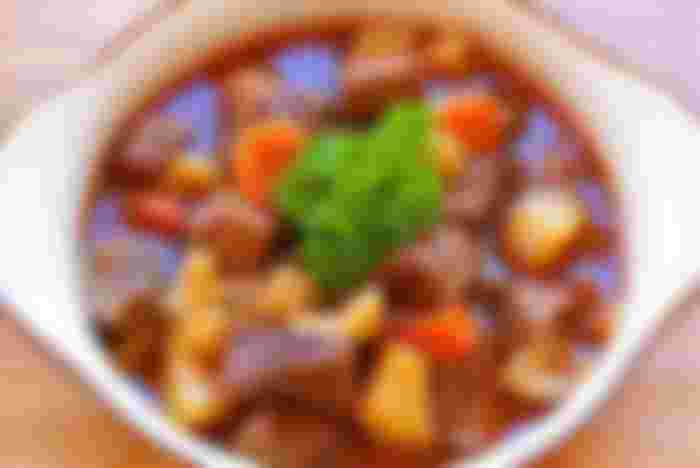There are many famous cuisines around the world, that worth to try. I am going to list out popular cuisines from around the world, that every foodie must go for. Whether you are a foodie or a casual restaurateur, you should really try all these cuisines at the nearest location to you. All these cuisines have a special story to offer to their visitors, and have a fascinating culture behind them. These cuisines are not only popular, but they have a dedicated following as well.
So, do you want to know about those cuisines?
Fine, I will begin with Spanish Food.

The Spanish food is fast becoming popular all over the world, mainly due to the large Spanish population in Latin America. The term "Spanish Food" is a blanket term for the different regional varieties of Spanish cooking. There is no unified Spanish cuisine, but rather a large number of varying regional Spanish cooking traditions.
Spanish foods tend to be relatively simple and not too elaborate. They are often made with pantry staples, rather than fancy ingredients. Spanish foods are known to be very hearty and are usually eaten as three course meals with wine or beer after each course.
Spanish food includes:
Jamón (Ham): This is probably the best known Spanish food. It is a cured ham which is usually served as a first course with bread and wine. It is usually served in the region of the north, where the climate is cold enough for it to be preserved through salting and drying.
Paella: This is a special kind of dish from the region of Valencia. It is a rich dish made with many ingredients. Usually it consists of chicken (including its bones and skin), beef (including its bones and skin), shellfish (such as shrimp, clams and squid), peas, beans, and various vegetables such as carrots, onions and celery. Other ingredients can be added, such as cut up hard- boiled eggs, sausages, and cut up fried chicken.
Arroz (Rice): This is the national dish of Spain. It is a thick rice stew which is eaten with salt. It can be made with chicken, duck, or any other kind of meat. It is often eaten cold in the winter.
Almond Tapioca Pudding: This is a traditional Spanish dessert, which is made from tapioca pearls cooked in sugar and almond milk. It is served cold.
Spanish Omelette: An omelette is an egg dish which is cooked in a flat cake made from beaten eggs, oil and liquid.
Indian Food

Indian food has become very popular in recent years, with the large Indian community in the United States being a major driver behind this.
There are many different kinds of Indian food, all of which are very popular. The different kinds of food are largely based on the different kinds of ingredients which are grown in the different parts of India.
The most common ingredients in Indian food are:
Basmati Rice: This is a kind of fragrant kind of long grain rice, which comes from the foothills of the Himalayas. It is particularly long and thin, and is the main ingredient in many different kinds of Indian curries.
Moong Dal: This is a split yellow lentil, which comes from the Indian state of West Bengal. It is used in several different kinds of Indian dishes, such as Chana masala and Daal.
Aloo (Potato): These large white potatoes are boiled, peeled and cubed, and then used frequently in various curries and meals.
Dry Fruits: These are fruits, which are sold in dry form, such as coconut, almonds, cashews, raisins, and pistachios. They are frequently used to make desserts and sweet dishes.
Ghee (Clarified Butter): This is a type of fat, which is obtained from cow's milk. It is used in many Indian dishes for frying and cooking.
Thai Food

Thai food has experienced a recent surge in popularity, and for good reason: it's one of the more unique and delicious cuisines in the world. While Thai food has been around for centuries, it is only in the past few decades that Westerners have rediscovered this ancient cuisine.
The main ingredients in Thai food are fresh herbs, fresh vegetables, fish sauce, chili peppers, lime juice, dry chili flakes, and dried shrimp.
Other ingredients include:
Jasmine Rice: This is a long-grained rice which is popular in Thailand, though it is also popular in other countries with a significant Thai population such as the United States. Jasmine rice is important in Thai cooking because it absorbs the sauces and flavors, that are being cooked with very well.
Tofu: This is a meat alternative made from soybeans. It is used in many curries and stir fries.
Tamarind: This is a sour fruit which is found in many different varieties. It is primarily used in Thai cooking to impart a sour flavor.
Fresh Veggies: A wide variety of fresh vegetables are used in Thai cooking. Many of these are used in stir fries, but some are only used in specific kinds of curries or soups.
Fish Sauce: This is a salt-like condiment made from fermented fish. Its main use in Thai cooking is to add depth of flavor to curries and other dishes.
Hungarian Food

Hungarian food is the traditional food of the Huns, the ancient nomadic warriors who once roamed vast areas of Central Europe. After the fall of the ancient Hungarian empire, the ancient Huns were assimilated by other nations, with their ancient food ways being forgotten. It wasn't until the 19th century, when the Huns were finally "rediscovered" by the Austrian government. The Huns, being the nomadic warriors that they were, began to move into the fertile lands of the former Austrian Empire, opening small businesses and farms. Their ancient ways of farming and livestock raising ultimately helped shape the modern-day agriculture in Austria, especially in the area of meat production, which is dominant in the Austrian diet.
Despite the fact, that the modern Huns are relatively assimilated into other nations, their ancient food ways still exist. One of these ways is the preservation of meats using raw salt, which is a process still used in modern-day Hungarian cookery. This process involves immersing meats, fish, or other foods in large quantities of salt for extended periods of times (up to several days), which enables the cook to keep the food (especially fish and meats) alive and prevents it from going bad.
Another ancient food way, that is still common in modern-day Hungarian cooking is that of feeding infants and small children with Adults' food. This is a very old Hun custom, which stems from the ancient warrior culture of the Huns.
Hungarian food includes:
Gulyás Soup: This is a thick beef soup, that is usually eaten with small dumplings. It is sometimes known as "Hunter's Soup", since it is a common food for hunters and outdoorspeople to consume, when foraging in the wilderness.
Pörkölt (Stewed Lamb, Beef, Chicken, Pork): These meats are stewed and sometimes topped with soured cream especially the chicken stew. Like the rest of European cuisine, this type of food is lower in fat and calories, than typical American fare, but a little goes a long way in terms of taste.
Lángos (Deep-Fried Dough): This is a type of deep-fried dough, that is popular in Hungarian cuisine. It can be topped with cheese, sour cream, garlic or other toppings.
Stuffed Cabbage: This is a common Central European dish, which involves cabbage being stuffed with minced pork and then cooked. Along with the meat, rice often cooked inside the cabbage leaves as well. This dish is often made for Christmas alongside with fisherman's soup.
Stuffed Paprika: This is another common dish in Hungary. Very similar to stuffed cabbage in terms of the stuffing. It is made with tomato sauce.
Although the cuisine of the former Austro-Hungarian Empire has its roots in ancient regional cooking, it was the influx of immigrants from other regions, that gave rise to the great variety of dishes we know today.

Lead image source: https://www.pxfuel.com/en/free-photo-exnnj







I love food. And I've tried a lot of dishes of Indian and Thai food, and of course, of Spanish cuisine. But the only dish I've tried of Hungarian cuisine is the Goulash. And I would love to try the other dishes you've mentioned.